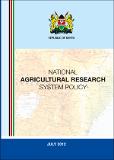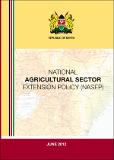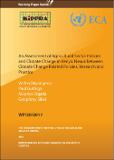| dc.description.abstract | This report constitutes the first agricultural policy review undertaken by the MAFAP project in Kenya. The report reviews the main developments of the economy and the agricultural sector as well as the main policy decisions affecting this sector. However, its main contribution focuses on: a) an analysis of price incentives and disincentives faced by farmers and consumers for ten agricultural commodities, which cover a significant share of agricultural production, imports, exports and diet; and b) a detailed analysis of the composition and level of public expenditure in support of agriculture and rural development. The former analysis was made for the period 2005-2010, while the latter covers 2006 to 2011. The commodity analysis is designed to identify how the current policy environment affects agriculture through its influence on commodity markets. It is based on well-known, simple indicators to measure the deviation of commodity prices received by various agents in domestic markets from an estimated ideal price in a distortion-free, competitive situation, referred to in this report as the reference price. The deviation is measured in monetary value per unit of marketed output (price gap) and in relative terms as a percentage of the reference price (nominal rate of protection). The reference price takes into account whether the commodity is an export, import or thinly traded product in world markets; the marketing costs currently incurred; and all taxes or levies. According to this indicator, when the domestic price is equal to the reference price, there are no distortions to farm incentives, indicating that the domestic prices are consistent with the comparative advantage of the country in producing the commodity. A domestic price above the reference price of the commodity suggests that producers are receiving transfers through the market or incentives due to existing policy or functioning of the value chain. On the other hand, producers are facing disincentives originating from policies or market factors when the domestic price is below the reference price. | en |




